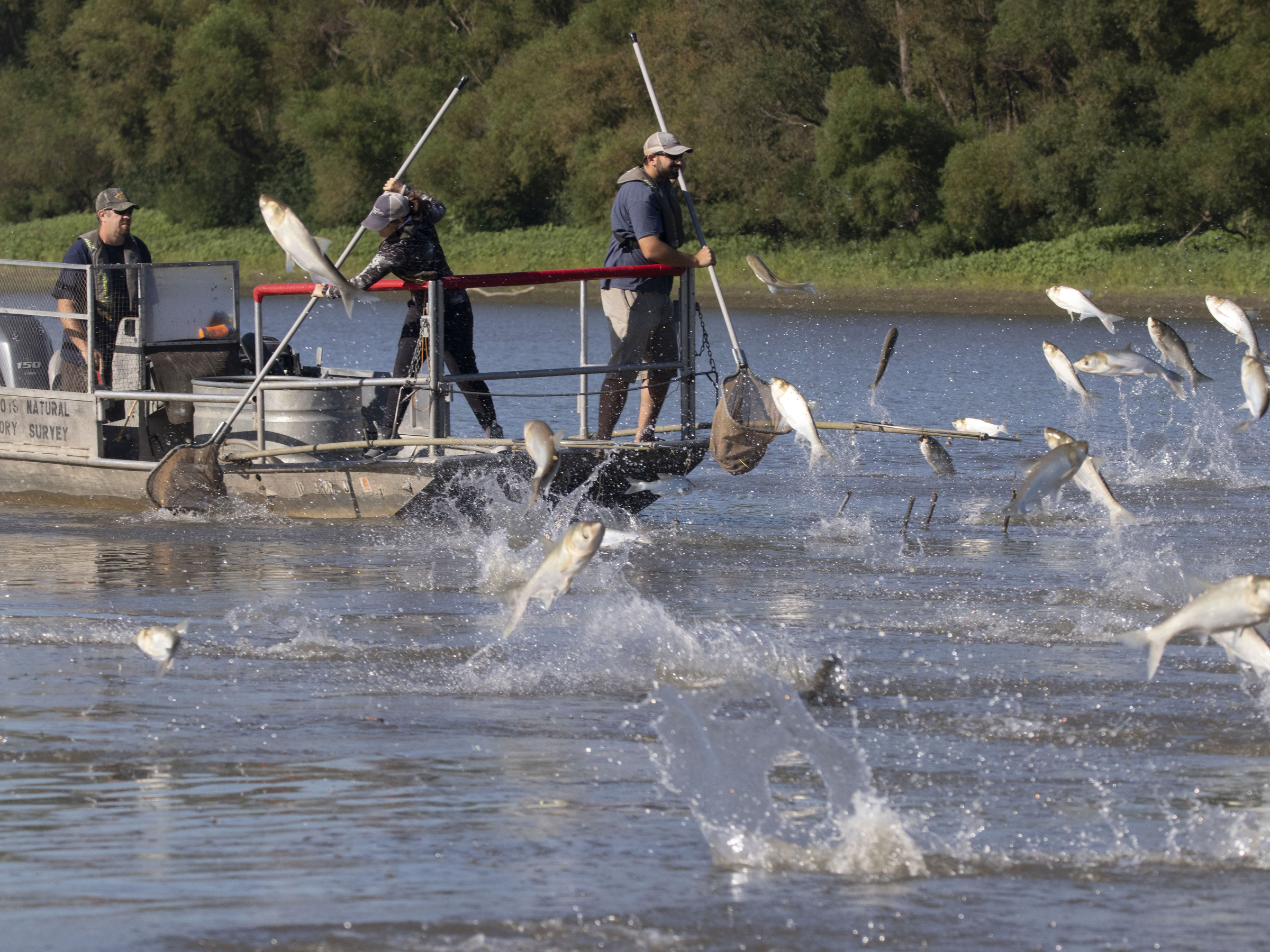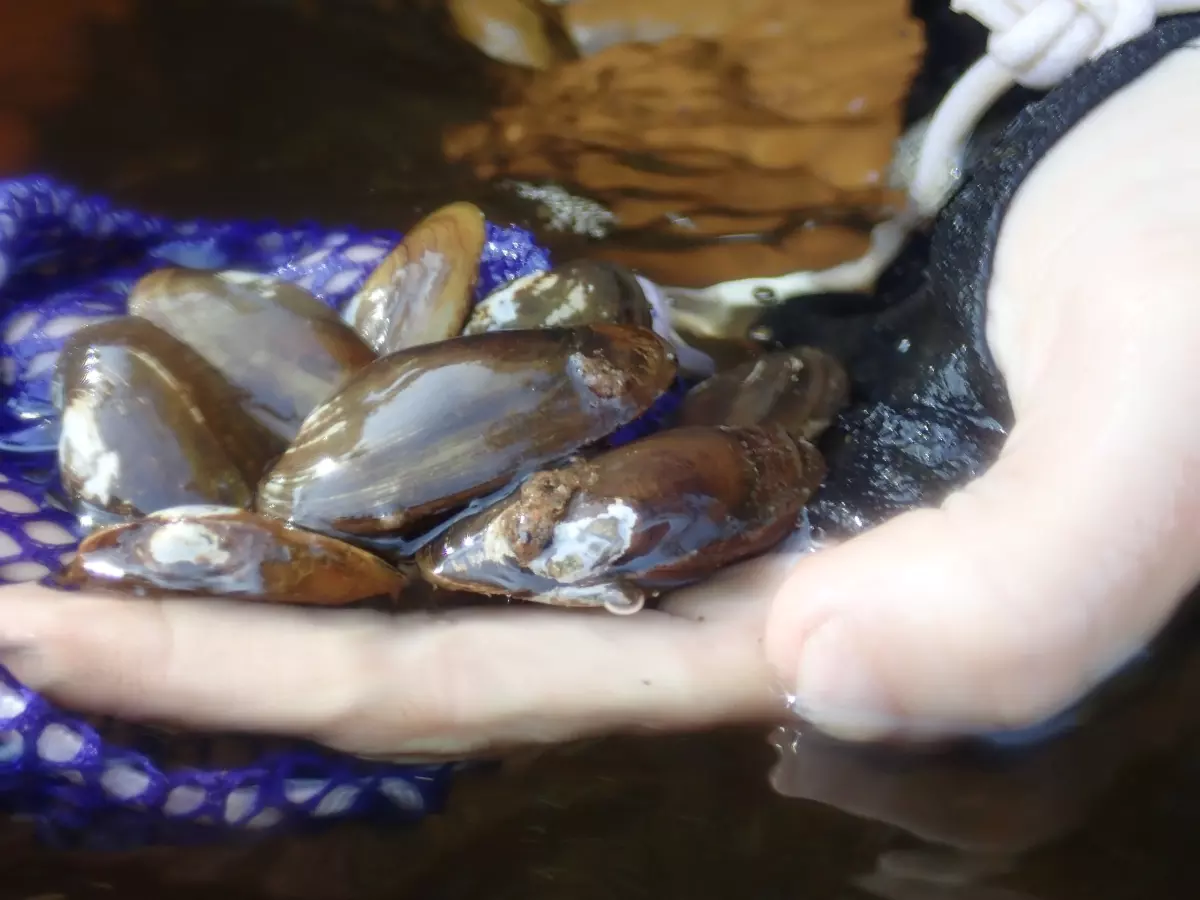New data is available to assess Wisconsin’s efforts to control aquatic invasive species. Larry Meiller finds out what the research shows, and how citizens can help.
Featured in this Show
-
Many Aquatic Invasives Are In Wisconsin, But Efforts Are Paying Off
Invasive aquatic plants and animals are a serious threat to native growth and healthy diversity of our lakes, streams, and swamps. And it’s a constant battle to determine where they are and control their spread. New research is available on how effective our efforts have been in Wisconsin, and what we can all do to help keep these invasives at bay.
Maureen Ferry is a water resources management specialist and the statewide aquatic invasive species monitoring coordinator with the Wisconsin Department of Natural Resources. She says that while the data does show that many lakes have invasive species in them, the research also shows that efforts to slow down their spread have been quite successful.
Compiling that amount of data is not easy. The project selects 200 lakes at random each year, and staff and volunteers go out to monitor them and inventory the invasive species that are detected. Ferry says “The purpose of this project is to get a good baseline evaluation of the distribution of invasive species in the state. And then also to see what the rate of spread is. Whether all of our efforts are really reducing the rate of spread, which we do believe they are. … It’s actually the first time that we’ve done a statewide study on where invasive species are.”
The lakes selected are from the subset of lakes where there is boat access, so more of a risk of invasive species being transferred from one body of water to another unwittingly. And they range in size from 10 acres to 5,000 acres.
Teams will start at the boat landing because that is the likely point of entry, but other likely areas, like a severely disturbed shoreline, a rocky point, an inlet or outlet, will be inspected. Monitors snorkel or SCUBA dive to visually inspect the lake bed. In addition, according to a recent web story about the project, “plankton tow nets, aquatic plant rakes, macroinvertebrate dip-nets, and shoreline meander surveys are used to search for invasive plants, planktonic organisms, mussels, and snails.”
Ideally, no invasives would be present in our lakes. But some are less of a concern than others. Ferry says that the “mystery snails” have become very prevalent, but don’t seem to be causing a lot of problems. “They seem to be fairly benign in a lot of the lakes. They’re more of a nuisance than anything” she explains.
That’s a far cry from the impact of zebra mussels. Those aggressive invasives “are really ecosystem engineers” according to Ferry. Currently, those mussels are in 164 Wisconsin lakes, and the goal is to stop their spread beyond those. Ferry shares the dramatic experience of SCUBA diving forty feet under the surface of a lake and being struck by the carpet of zebra mussels covering the lakebed. AS those mussels filter the water, they are really changing the ecosystem of that entire lake.
The statewide aquatic invasive species monitoring project is very unique, and Ferry hopes that it will be used as a model for other states or regions. “Nobody’s done anything to the extent that we’ve been doing it,” she says. “and really, we’re able to do it because of all the partnerships that we have.” The project relies on a broad coalition and many volunteers to make it successful. Partners in the statewide AIS monitoring project include Wisconsin Department of Natural Resources, County, Great Lakes Indian Fish and Wildlife Commission, University of Wisconsin-Madison, University of Wisconsin-La Crosse, University of Wisconsin-Superior, University of Wisconsin Extension, Northland College, Resource Conservation and Development Councils, Citizen Lake Monitoring Network, and Volunteer staff.
With 200 lakes being monitored, Ferry says that it couldn’t happen without concerned citizens taking part. In each crew, there is a lead worker on the boat who is usually a DNR staffer. But also representatives from the partner organizations take on a lot of the work as well. And engaging a volunteer who lives on that particular lake is also a goal, too. Ferry explains “because that volunteer’s going to have the most knowledge of the lake, they’ll know where there’s an unusual plant bed and places that we should target … and it’s just a neat way for the DNR to be working side by side with the citizens.”
There are many ways for citizens to get involved no matter where in the state they live. Information on volunteering is available on the DNR web site. There is also a county by county map with contacts involved with the statewide aquatic invasive species monitoring project.
Episode Credits
- Maureen Ferry Guest
Wisconsin Public Radio, © Copyright 2024, Board of Regents of the University of Wisconsin System and Wisconsin Educational Communications Board.


